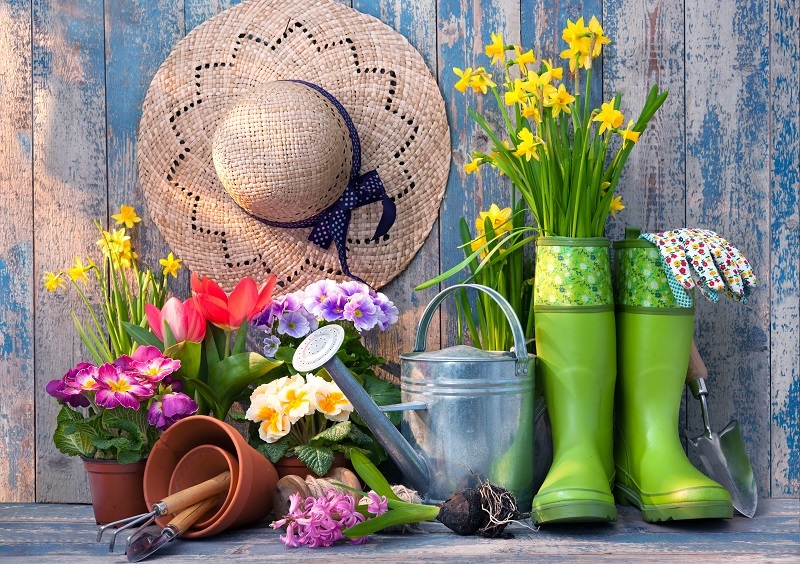Strategies for Longer-Lasting Poinsettia Blooms
Posted on 29/08/2025
Strategies for Longer-Lasting Poinsettia Blooms
Poinsettias are iconic holiday plants cherished for their vibrant red, pink, or white bracts that add festive cheer to homes and offices during the winter season. While their beauty is undisputed, many people find their bright poinsettia blooms fading sooner than expected. Ensuring your poinsettia displays its colors well beyond the holidays requires a combination of the right care tactics and a solid understanding of poinsettia needs.
In this comprehensive article, we'll explore proven strategies for longer-lasting poinsettia blooms, helping you enjoy your plant's brilliance for weeks or even months. You'll learn about selection tips, environmental needs, watering routines, and much more to keep your poinsettia healthy and thriving.
Understanding Poinsettia Blooms and Bracts
Before delving into specific strategies, it's important to clarify the difference between bloom and bract. What we commonly refer to as poinsettia "flowers" are actually the plant's colored bracts, or modified leaves. The true flowers are the tiny, yellow cyathia at the center of the bracts. Longer-lasting color depends on both bract preservation and flower health.
Selecting Healthy Poinsettias
- Choose wisely: Purchase your poinsettia from a reputable nursery or store with well-maintained plants.
- Inspect for freshness: Look for plants with fully colored, undamaged bracts and numerous unopened cyathia (true flowers).
- Avoid stress: Select a poinsettia that hasn't been sitting near doors, drafts, or cold windows.
- Check foliage: Healthy Poinsettia leaves should be deep green, without yellowing, wilting, or spots.

Optimal Care for Extended Poinsettia Blooms
Longevity for poinsettia blooms is a matter of creating the most suitable environment. Here's what your plant needs:
Light and Temperature: Key Environmental Factors
- Bright, indirect light: Place your poinsettia near an east or west-facing window with abundant light but out of direct, harsh sunlight.
- Stable, moderate temperatures: Poinsettias thrive between 65-70?F (18-21?C) during daytime and 60-65?F (15-18?C) at night.
- Protect from cold drafts: Avoid windowsills, doors, and drafty spaces where cold air can hit the plant.
- Avoid hot spots: Keep away from heat sources like radiators, fireplaces, or vents, as excessive warmth can shorten bloom life.
Temperature fluctuations and intense sunlight or darkness are major reasons why poinsettia flowers fade early. Consistency is key!
Proper Watering Techniques
- Check soil moisture: Insert your finger into the soil. Water the poinsettia when the top inch feels dry.
- Water thoroughly: Moisten the soil evenly but ensure water drains from the bottom; poinsettias dislike "wet feet."
- Avoid overwatering: Standing water encourages root rot, which damages blooms and bracts.
- Discard excess water: Never let your plant sit in a saucer filled with water for long periods.
A consistent, moderate watering routine is one of the most effective poinsettia bloom care strategies.
Humidity and Air Circulation
Poinsettias thrive with slightly higher humidity, especially in heated winter homes:
- Increase air moisture: Place your poinsettia on a pebble tray filled with water (the pot should never touch the water directly).
- Group plants: Position several houseplants together to create a more humid microclimate.
- Avoid drying air: Keep poinsettias away from heat vents or fans where dry air circulates.
A balance of humidity and gentle airflow prevents leaf drop and helps poinsettia bracts stay colorful and fresh longer.
Feeding Your Poinsettia for Optimal Blooms
While active blooming plants typically do not need fertilization, after the bloom period--or if you wish to encourage bract retention--apply a balanced, all-purpose houseplant fertilizer at half strength every three weeks.
- Skip fertilizer during peak bloom: Only fertilize once the plant begins to fade or if you aim for reblooming the following year.
- Use quality fertilizer: Look for a product with balanced nutrients (e.g., 10-10-10 or 20-20-20).
Correct feeding practices are part of successful strategies for long-lasting poinsettia flowers.
Handling and Placement Tips
- Minimize movement: Each location change can stress the plant and reduce its bloom period.
- Handle with care: Bruised or broken bracts are prone to fading and dropping prematurely.
- Remove protective sleeves immediately: After bringing your poinsettia home, gently remove any plastic or paper sleeves as they trap damaging ethylene gas.
Strategic home placement
For prolonging poinsettia bloom color, place your plant in a visible yet low-traffic area, away from busy entrances and pet or child play zones where it may be bumped or knocked over.
Guarding Against Common Poinsettia Problems
Poinsettias are susceptible to a few key problems that can dramatically shorten their bloom display. Let's look at prevention and solutions:
Leaf Drop
Primary causes:
- Sudden changes in temperature or lighting
- Drafts (hot or cold)
- Over- or under-watering
Solution: Restore proper growing conditions quickly; prune away dropped leaves and monitor moisture closely.
Bract Browning or Curling
Primary causes:
- Direct heat or sunlight
- Dehydration
- Low humidity
Solution: Ensure good air moisture, protect from sun and warmth, and check watering schedule.
Pests and Diseases
Common threats include whiteflies, spider mites, and root rot. Monitor your poinsettia for sticky residue, pale leaves, or spots--early intervention with insecticidal soap or appropriate fungicides can prevent serious damage.
Encouraging Rebloom for Next Year
If you've been successful in keeping your poinsettia healthy, you may want to encourage your poinsettia to bloom again next season.
Here are the step-by-step poinsettia care strategies for rebloom:
Spring and Summer Care
- After bracts fade: Prune the plant back to about 4-6 inches tall after the holidays.
- Continue bright, indirect sunlight: Keep your plant well-lit.
- Feed lightly: Begin a monthly fertilizer routine.
- Water regularly: Keep soil evenly moist.
- Transplant outdoors: If temperatures permit, set your poinsettia in a semi-shaded garden spot after danger of frost passes.
Inducing Bloom (Photoperiod Control)
Poinsettias are short-day plants--they require at least 14 hours of complete darkness each night for 8-10 weeks, beginning in mid-September to early October, to set bud and color up their bracts.
- Cover or box: Each evening, place the plant in a closet or box, or cover with black plastic from 5 PM to 8 AM.
- During the day: Move it back to a sunny spot.
This rigorous schedule will initiate the flowering process and ensure vivid poinsettia bract color in time for the winter holidays.
Expert Tips for Enjoying Poinsettias Longer
- Buy early, enjoy longer: The fresher the plant, the longer the color will persist.
- Dust gently: Keep leaves clean for best gas exchange and appearance by brushing dust off with a soft cloth.
- Rotate regularly: Spin the pot every few days for even light and symmetrical growth.
- Avoid stress: Keep pets and children from disturbing the plant; stress is the number-one reason poinsettias drop their bracts.

Frequently Asked Questions About Poinsettia Bloom Longevity
How long should poinsettia blooms last?
With proper poinsettia care strategies, colored bracts can last 4-8 weeks or more, and healthy plants may keep their color through February or even March.
Why are the leaves or bracts dropping?
This usually signals environmental stress--check watering, temperature, light, and drafts. Resolve issues promptly for longer-lasting color.
Can I get my poinsettia to rebloom next year?
Yes! Follow the reblooming cycle described above, with careful attention to darkness each night in the autumn.
Conclusion: Mastering Strategies for Longer-Lasting Poinsettia Blooms
Enjoying poinsettia flowers for a longer period is possible with a little proactive care and careful observation. By selecting healthy plants, providing optimal light, temperature, and humidity, practicing careful watering, and being mindful of common problems, you'll maximize the vibrant display of your holiday favorite.
Try these expert-backed strategies for longer-lasting poinsettia blooms and enjoy the festive beauty of this classic plant well past the new year!
If you found these tips helpful, share with friends or bookmark for the next holiday season--and let your poinsettia shine bright for weeks to come.







